The Big 3 of Altitude Sickness: AMS, HAPE, HACE

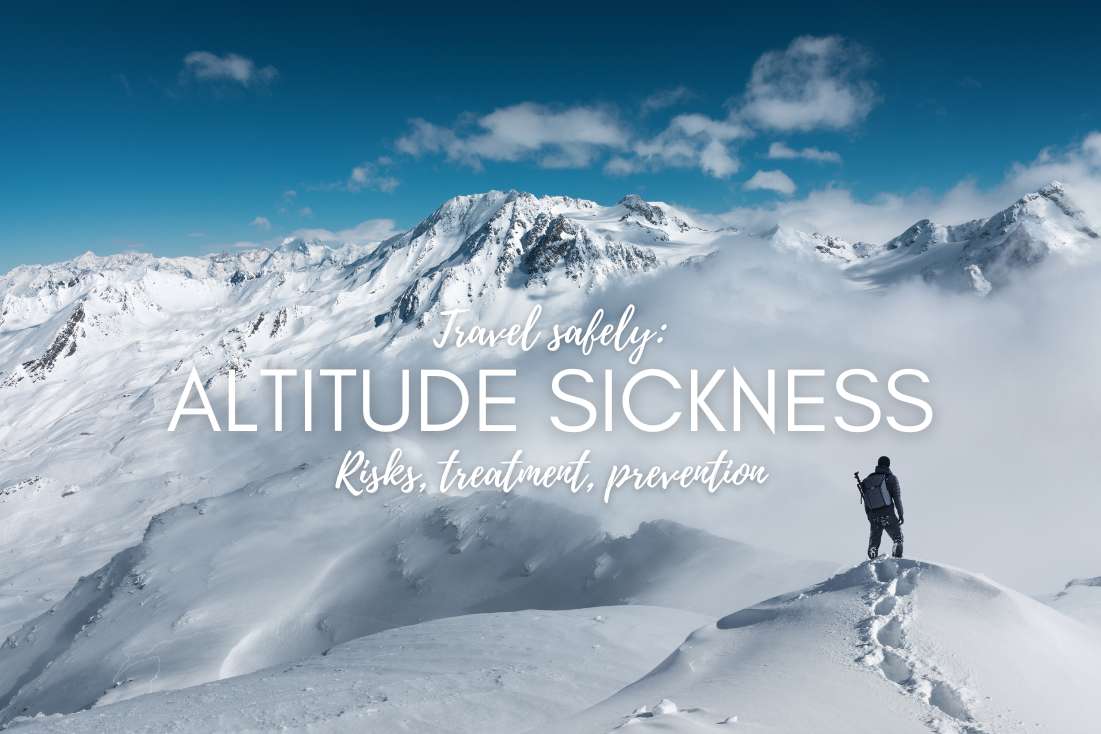
Altitude Sickness or AMS (Acute Mountain Sickness) can go from annoying to critical. What is HAPE and HACE? What are the symptoms and how to treat them? As I was dealing with AMS myself several times in Mexico and Chile, I decided to write down all the essential information for you and something on top of that. Interested? Keep reading.
1. What is altitude sickness (acute mountain sickness)
When being higher than 2 400 m (8 000 ft), the human body may experience hypoxia, which is a medical term for a shortage of oxygen supply in a human organism. At an elevation of 3,000 m (10,000 ft), the amount of oxygen in the air drops to just two-thirds of what it is at sea level. The body´s reaction to the shortage of oxygen is called altitude sickness, mountain illness, or a medically more accurate variant, acute mountain sickness (AMS).
All of this may happen to less experienced climbers. It certainly happened to me in Chile and Peru. Usually when you ascend too quickly, without proper acclimatization, or when you sleep at high elevation. AMS may take in a number of symptoms, some being mild and some pretty ominous. Let’s take a look at them… but first, take a look at this handsome hiker.
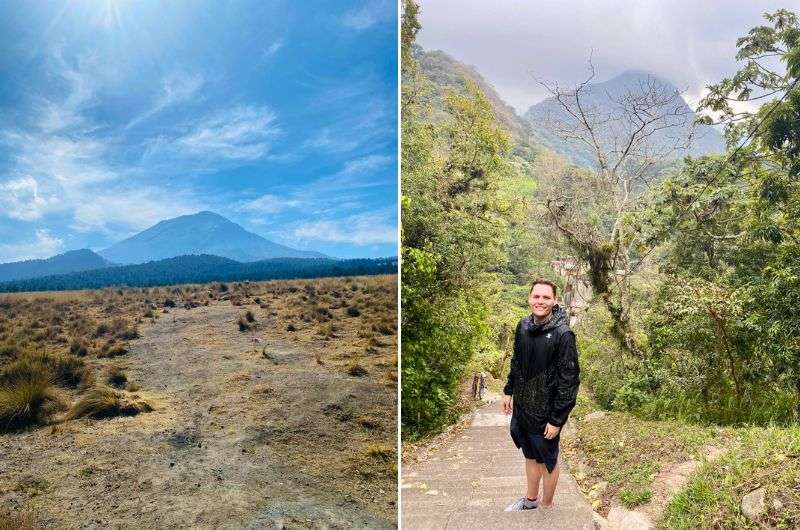
Hiking in Orizaba
2. Altitude sickness symptoms
Altitude sickness manifests itself in various forms, depending on its severity. However, it can be tricky, as the first occurring symptoms are basically the same as when you have a hangover:
- headache
- feeling sick (followed by vomiting)
- drowsiness and dizziness
- loss of appetite
- shortness of breath
Mostly it gets worse at night, which can be dangerous, especially when hiking on your own. When not treated, altitude sickness may lead to some serious health complications, unconsciousness, or even death. This is not to scare you, but to make you aware… believe me, when my wife experienced elevation sickness, I was desperately looking for an article like this. By the way, Altitude sickness is much more common than you would have guessed - I had also a mild version in Salta in Argentina, and in Mexico City after landing.
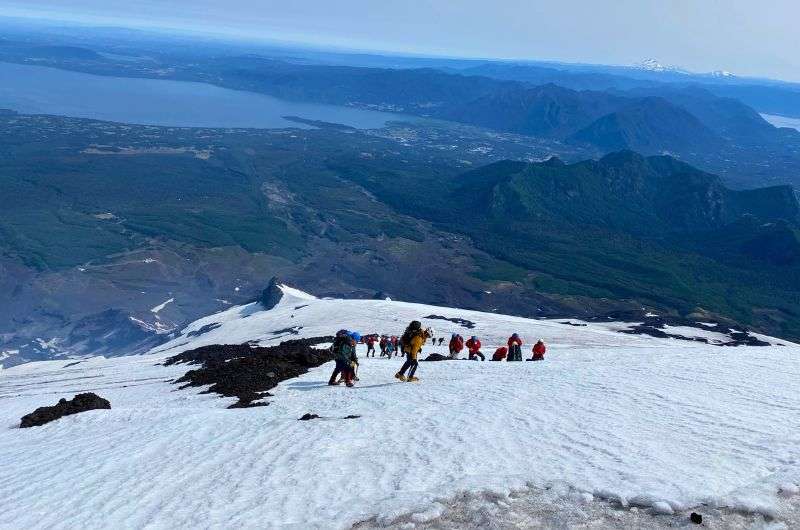
You really don't want to feel these symptoms at an altitude where you just have to keep going
3. The health risks of altitude sickness
The health risks vary, from mild AMS to HACE and HAPE which can be deadly. Let’s now take a look at those acronyms to make it less scary.
AMS (Acute Mountain Sickness)
What it is:
AMS is the most common. It appears when you are going up too fast without proper acclimatization. It's just a temporary inconvenience, but you should pay attention to it.
What it looks like:
Acute mountain sickness leaves no permanent damage, but it can be pretty annoying, I’m telling you. The headache and drowsiness (luckily) prevent you from going further. Add the nausea and vomiting in your tent and it sounds like a nightmare.
What to do with it:
The best thing you can do is either descend a bit (at least 500 m; 1 600 ft) or stay at the same spot for two or three days to get used to the elevation. Do not in any case continue to ascend until you are fully recovered! This one is tricky and looks harmless, but it can get worse so quickly.
Read also: Guide to Rainbow Mountain in Peru. I had the worst altitude problems there.
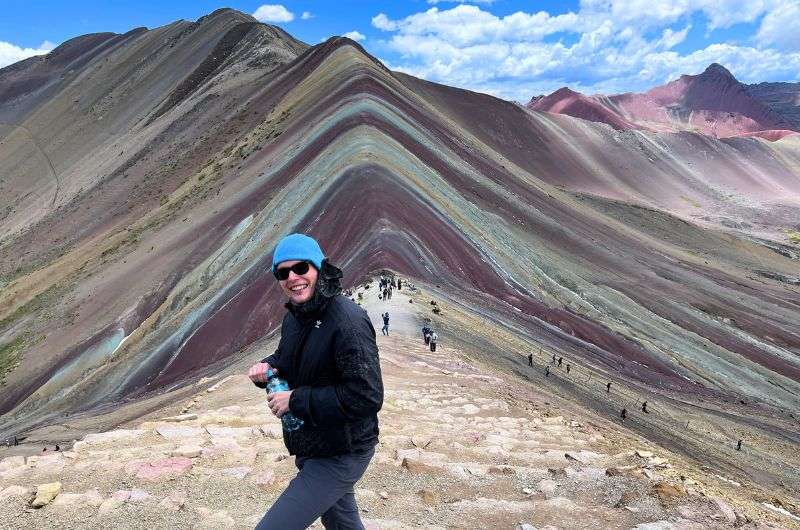
It may not look like it, but even here on Rainbow Mountain, I was fighting altitude sickness. Coca leaves saved me!
HAPE (High-Altitude Pulmonary Edema)
What it is:
HAPE means your body builds up excessive fluid inside your lungs, causing them to swell up. The excess fluids inside the lungs prevent oxygen from circulating in your body. And I hope you know that you really need the oxygen circulating. The occurrence of HAPE is 1 per 100 climbers at more than 4 270 m (14 000 ft)—according to the CDC, which makes it quite rare, but you should know about that still.
How it looks like:
It may occur as late as several days after your arrival at high altitude. The basic symptoms are the same as AMS, just worse. At this point, the affected person also experiences shortness of breath (not caused by the stunning mountain views) and a dry cough. The fatal turn in HAPE can be much faster than with HACE.
What to do with it:
The oxygen income or descent must come asap and preferably without physical exertion of the person experiencing it. At this point, you shouldn’t stay in the mountains but seek professional medical care. If not possible, use the dexamethasone or oxygen bomb to relieve the person affected and descend immediately when possible.
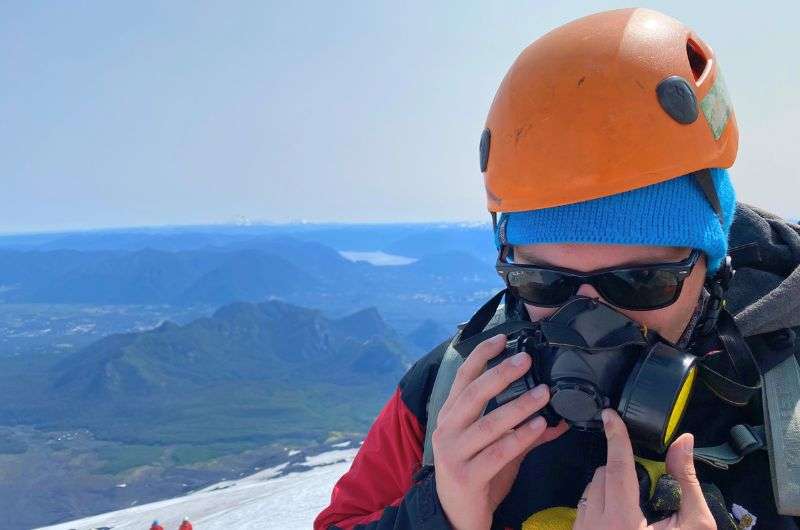
It is important to provide the body with enough oxygen
HACE (High-Altitude Cerebral Edema)
What it is:
This is where it gets really serious. HACE or High-Altitude Cerebral Edema is the swelling of the brain. It may happen when the AMS is not treated and you continue to ascend, not fully recovered. Despite being the rarest form of AMS (the incidence of HACE is 0.5–1% at the altitudes of 4 000 to 5 000 m; 13 120 to 16 400 ft), you should be aware of it.
How it looks like:
HACE develops quickly, just over a few hours. The person affected usually isn’t aware of it (they will insist that they are ok) and hallucinations frequently occur at this phase, making it even more dangerous. It may cause permanent brain damage, coma, or even death, when not treated immediately.
What to do with it:
Immediate descent of at least 1,000 m (3 280 ft) is crucial. There are the same rules as with HAPE: no physical exertion, use of dexamethasone or oxygen supply to ease the symptoms, and seek medical care asap.
4. Altitude sickness treatment
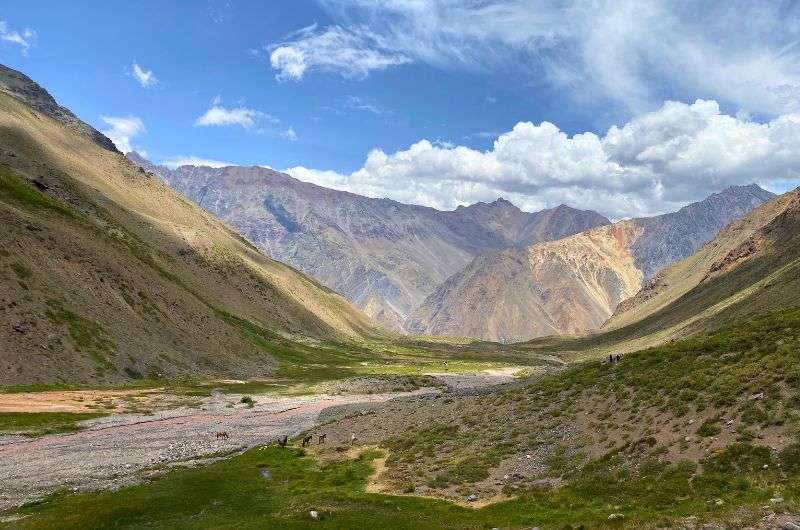
Don't worry, altitude sickness can be dealt with, so you'll enjoy your trip to the mountains regardless
The treatment for altitude sickness isn’t complicated, however, it’s always better to prevent it in the first place. Most importantly: DO NOT PANIC! It won’t help anyone. After you take a few deep breaths, stick to this list:
- stop and rest where you are
- do not go any higher for at least 24 to 48 hours
- if you have a headache, take ibuprofen or paracetamol
- if you feel sick, take an anti-sickness medicine, such as promethazine
- make sure you're drinking enough water
- do not smoke, drink alcohol, or exercise
- regular caffeine users should continue to do so
It’s especially younger males who make the mistake of continuing in ascending, not fully recovered. Don’t do that, it’s not heroic, it’s stupid, and it may have serious consequences. Continue to ascend only once you’ve fully recovered. And that can take two or three days. You should also inform your buddy about how you feel.
Let's say you’re hiking with some stubborn mule who insists on being all alright and ready to go. In that case, look after him or her and don’t believe a word they say. When the AMS is not treated, it might get worse and the person affected may have hallucinations and get disoriented. Be prepared for that. And don’t let your buddy run around in the mountains tripping and delusional.
5. Altitude sickness prevention
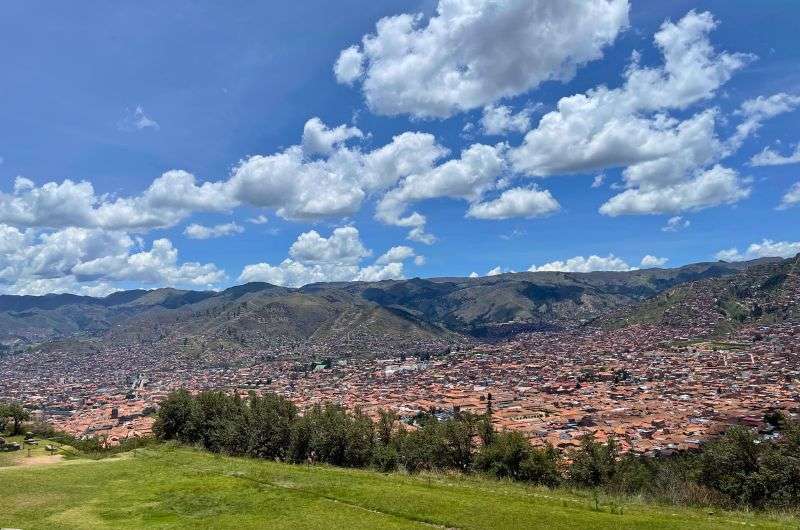
Cusco is a city located at a high altitude. Here, your body can take a few days to get used to it so altitude sickness shouldn't catch it by surprise elsewhere in Peru
As I said earlier, it’s best if you don't have to worry about that at all. And don’t be cocky, the AMS can affect even trained and fit, perfectly healthy people with zero body fat. So, take the advice. First and foremost: TRAVEL SLOWLY ABOVE 2 500 m (8 200 ft)!
- don’t fly directly to areas of high altitude, if possible (it would be a big shock for your body)
- consequently, take 2 to 3 days to get used to high altitudes before going above 2 500 m (8 200 ft)
- avoid climbing more than 300 to 500 m a day (1000 to 1600 ft)
- rest every 3 to 4 days or take a rest day after a long ascend
- drink enough water
- avoid smoking and alcohol
- don’t strain yourself too much for the first 24 hours
- high-calorie diet will help you get enough energy
If you had a previous experience with acute mountain sickness, consult your doctor and ask him to prescribe you dexamethasone. It will help you relieve symptoms in case the descent is impossible at the moment. Professional climbers usually have it in their medical kits as it also helps to decrease brain swelling.
High-elevation destinations: Are you going to a risky area?
You might be surprised, but altitude sickness occurs not only in the Himalayas or other world known climbing destinations. It can catch you by surprise at your vacation trek anywhere the altitude is over 2500 m (8200 ft). Here are some massively visited high-altitude areas:
- Cusco (11,000 ft; 3,300 m)
- La Paz (12,000 ft; 3,640 m)
- Lhasa (12,100 ft; 3,650 m)
- Everest Base Camp (17,700 ft; 5,400 m)
- Kilimanjaro (19,341 ft; 5,895 m)
From my experience also in: Mexico (Izta-Popo NP) and Chile in San Pedro de Atacama.
In my experience: Mexico (Izta-Popo National Park) and Chile
When I was in Mexico and in Chile all trails were harder than other places I’ve been before. The hike was short, just a few kilometers, but very challenging due to the high elevation gain—for example, Quebrada de Humahuaca in Argentina. And just so we’re clear, I’m no wuss (as you can see in the picture below, I’m a heroic badass).
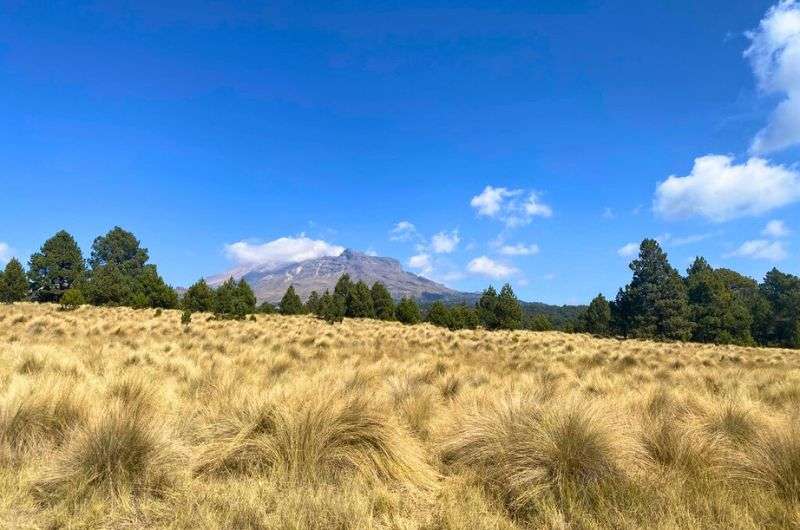
Hiking in Izta Popo National Park
Why do some people get altitude sickness and some don’t?
The scientific research shows that experience plays no role in this. It’s all genetics. So even if you’re physically fit and young, you can have acute mountain sickness. On the other hand, you can be older or amateur and be just fine. Gender also doesn’t matter here. Basically it’s a lottery, but those who pay attention to prevention have a real chance to dodge the bullet.
Read also: Shark Cage Diving in South Africa: 3 Stages of My Heroic Descend Among the White Sharks
Pre-existing medical condition: Should I avoid high-altitude hikes?
As we said, it’s mostly random, however, you should be cautious with these medical conditions:
- heart failure
- myocardial ischemia (angina)
- sickle cell disease
- any form of pulmonary insufficiency or preexisting hypoxemia
- obstructive sleep apnea (OSA)
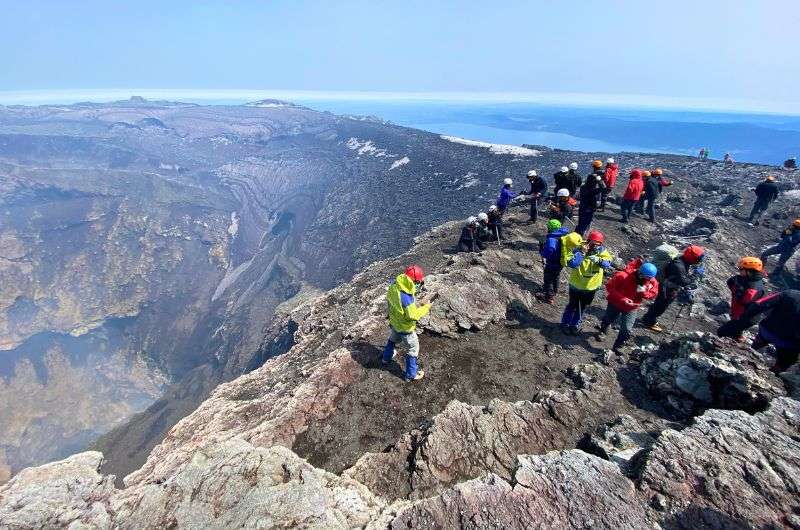
Villarrica gave me a hard time, but even with altitude sickness I conquered it and I got an incredible experience out of it
If you are treated with some of the above, you should consult your physician when planning such hikes. Surprisingly, patients with well-controlled asthma, hypertension, atrial arrhythmia, and seizure disorders at low elevations generally do well at high elevations. It’s also a good idea to think carefully about high-altitude traveling when you're a diabetes patient or pregnant. It may be safe, but you should be aware of the risks and prepared for the emergency if the AMS occurs.










Comments | Thoughts? Give us a shout!